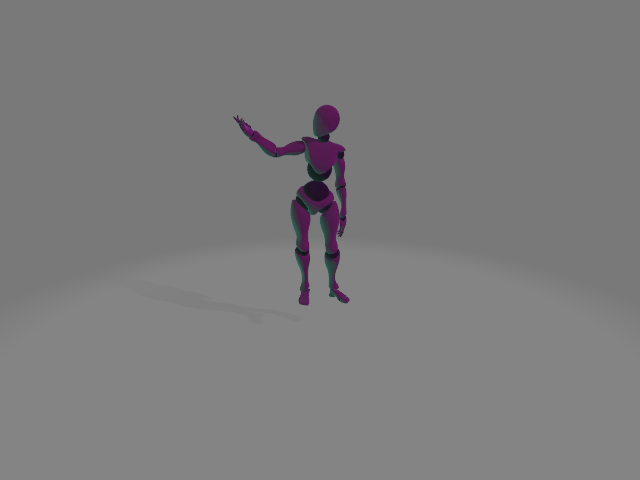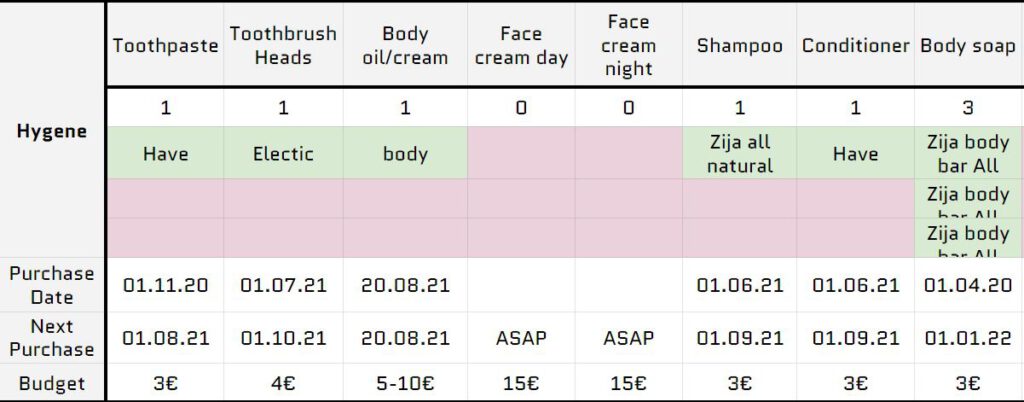Inventory the Best Way to Declutter Your Life

10 Minute Read
Introduction
Games like RPG games use inventories to add limitations to the player and force them into making meaningful decisions and prioritize what they want to carry around and keep. Sometimes you get the choice of upgrading your inventory with in game currency or experience points. I find these mechanics quite translatable into real life. As a student you mostly have low income and little experience about your desires and needs, once you level up through society and get a job you gain the ability to buy more things. So like in games you should be limited in how much you can buy and posses in relation to your wealth and experience. Creating an inventory allowed me to reflect on how much stuff I have accumulated, and with that knowledge I was able to make plans for purchases or getting rid of things. Everyone needs to decide on their own boundaries but by filling in what I have, it raised my awareness and allowed me to access myself better. Additionally I found that some things need to get renewed, so I planed in the expiration date or decided that an upgrade can be done when I have the money. As an example lets take shoes. Shoes are something that has an expiration date due to the nature of its use case. One walks in them, therefor they break over time. This decay can be somewhat estimated. From that a plan to purchase a new pair can be made. Since one knows this degradation will happen, it makes sense to add this into my budget plan. Another example is a winter jacket. Jackets have a much longer lifespan depending on their material. Some may even last a lifetime. Lets say you have a fairly expensive winter jacket that you got as a present. You know it will last another 20-30 years, but you do not actually like it that much because it does not fit your style. In your inventory you could add a condition to your jacket. For example: If you reach a new milestone in your career you buy a new jacket as a reward and sell your old one. All these things could be added in your inventory to help you plan better, allowing for higher quality choices in purchasing items. The issue I had was finding a proper application that allows me to do this. So I resorted to Excel or Google Sheets for this.
Examples from games
CryoFall
In the image below you see a very clean inventory design from the game CryoFall. As you can see there is a limit to the amount of spaces in that inventory. The bottom section is commonly for items in the backpack and the spaces next to the character are reserved for items that can be put on to the character. On the left you see two X in the slots under the pants. This space will most likely be unlocked later on during the game.

Pathfinder: Kingmaker
In this inventory the arrow points to a weight count. If you carry too much you will become slower in the game. Additionally at the top under Shared Stash you see that the inventory can be categorized for items.

How does it benifit my everyday life
In the image below you can see a snippet of the inventory that I designed in google sheets. As you can see there is a purchase date and a date for the next purchase with a budget for the item. This gives me a quick overview of what needs to be purchased as well as indicating how much was spend on these items. All together I would spend 46 € for all products together. I also know that all these products run out about every 3 months, so therefor an estimate can be created of around 200€ a year, on these products. This can then be added to my budget plan. So basically an inventory is just a really good way to manage your belongings. If you want to minimize your stuff this is probably the best way to do it.
How i can implement this gamification idea
Using some data management software is gonna get you pretty far. I recommend using Notion.so or Google Sheets.






 4000 Damage Badge (Super hard to get)
4000 Damage Badge (Super hard to get) Win Two Rounds in a Row
Win Two Rounds in a Row